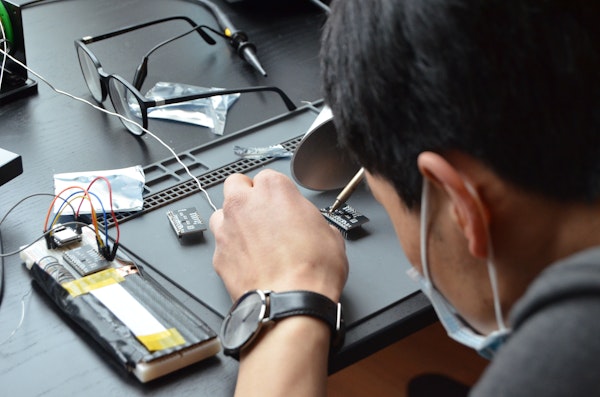Port 6's goal is to build the leading augmented reality interaction laboratory in Europe over the next year. A time machine over and into the next leap in human cognition since the invention of the personal computer.
You will be working in our biometrics laboratory prototyping novel sensor and signal processing architectures in the acoustics domain. This includes the entire process from ideation, to research, prioritization and execution. These prototypes will be in the form of a portable wearable wristband device that gathers and processes sound based information from the air, skin, and internal tissue of the human body.
Part of this work involves searching and understanding research papers at the forefront of low powered radio technology, as well as tailoring your sensor designs to be optimized for specific types of signals that are of interest to the augmented reality interaction domain.
At its core, you will be developing quick and dirty proofs of concepts, non-invasive wearable electronics, various radio transmitter and receiver configurations and signal processing pipelines based on new information we learn every day.
We move quickly.
Additionally you will work closely with the rest of your team to design wristbands that include more than just radio technology. You will also work closely with our interaction designers to understand the design requirements and constraints of a typical AR user and see your work directly implemented into amazing AR experiences.
Responsibilities
Delivering numerous proof of concepts with our team by rapid iteration.
Making Prototypes and Circuit Designs for portable and wearable bioacoustics devices.
Communicating findings, uncertainties, and properties of your work.
Things we would value from you
An advanced degree in Radio Science, High Frequency Electronics, Analog and Digital Circuit Design, Electrical Engineering or similar
Prior work with high frequency signal transmission, propagation through mediums with varying properties, and reception.
Experience with antenna design from small to large, broad to directional, and single to multiple.
Fluency with signal processing
Familiarity with designing and making small and low power electronic circuit boards
Experience making a range of prototypes from quick and dirty proof of concepts to polished wearable devices close to the end use case.
Plus if
Excellent communication skills in English
Vim
If you love creating extremely cool stuff, we'd love to see your application!
Notes
Usually you design radio to be least prone to interference, we are trying to do the opposite. We want to design radio to be most prone to interference to our hand movements so we can detect what hand movement we're doing with radio.
Perks and benefits
This job comes with several perks and benefits
Flexible working hours
Near public transit
Social gatherings
Equity package
Free office snacks
New tech gear
Working at
Doublepoint
